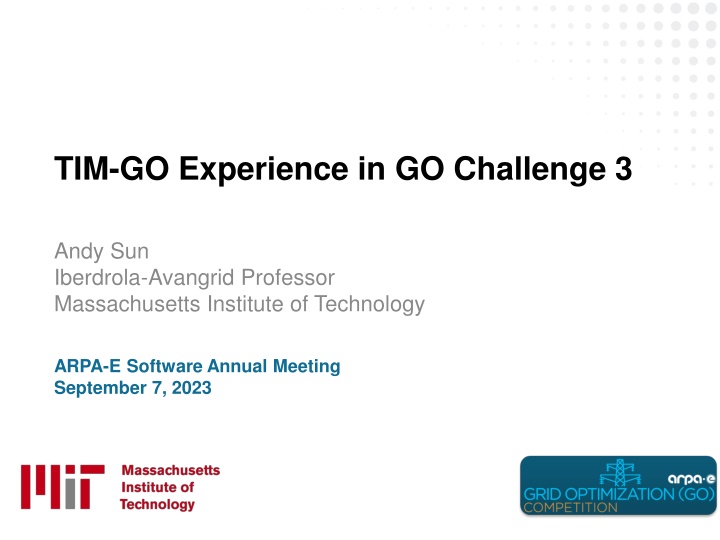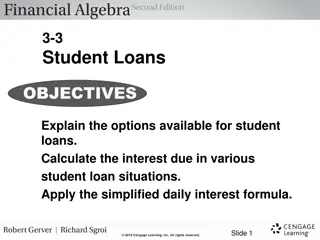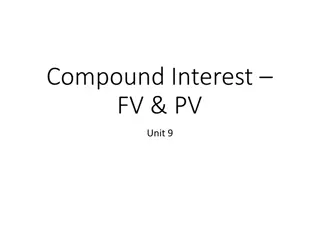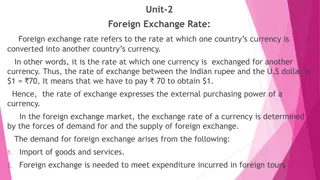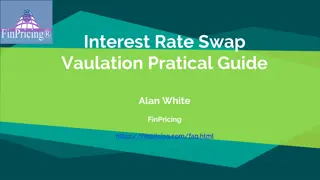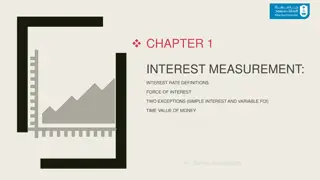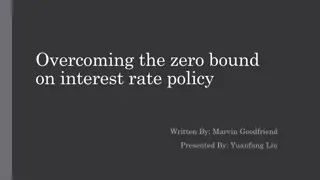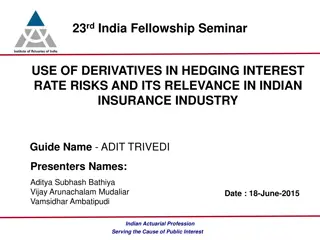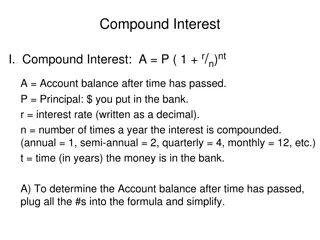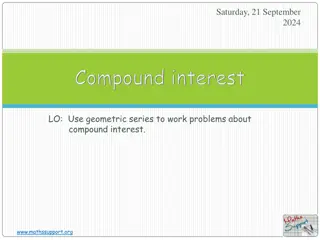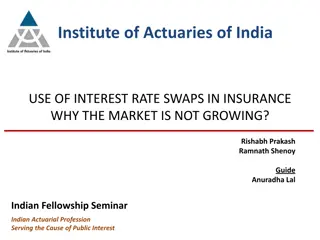Investments Course Overview & Interest Rate Dynamics
Dive into the world of investments with a focus on interest rate determination, return comparison, inflation impact, time series analysis, risk measurement, and more. Explore the relationship between risk and return in US capital markets and understand the nuances of real vs. nominal interest rates.
Download Presentation

Please find below an Image/Link to download the presentation.
The content on the website is provided AS IS for your information and personal use only. It may not be sold, licensed, or shared on other websites without obtaining consent from the author.If you encounter any issues during the download, it is possible that the publisher has removed the file from their server.
You are allowed to download the files provided on this website for personal or commercial use, subject to the condition that they are used lawfully. All files are the property of their respective owners.
The content on the website is provided AS IS for your information and personal use only. It may not be sold, licensed, or shared on other websites without obtaining consent from the author.
E N D
Presentation Transcript
TIM-GO Experience in GO Challenge 3 Andy Sun Iberdrola-Avangrid Professor Massachusetts Institute of Technology ARPA-E Software Annual Meeting September 7, 2023
TIM-GO Team TIM-GO Team Members Real Drivers: Matthew Brun Thomas Lee Dirk Lauinger Xin Chen Prof. Andy Sun (PI) Grid Optimization 1
Progression of ARPA-E GO Challenges Disjunctive-SC-ACOPF in Challenge 1 Single-period AC OPF Generator & branch (line & transformer) contingencies Preventive & corrective contingency actions PV/PQ switching in base & contingency Up to 30k bus, 35k brch, 3.5k gen, 22k ctg in 10-45min SC-UC-ACOPF-LS in Challenge 2 Flexible load dispatch UC decision (1-period both in base-case and ctg) Branch switching, shunts switch, tap ratios and angles Up to 31.7k bus, 40k brch, 4.6k gen, 3-9k ctg in 5-60min 2
Progression of ARPA-E GO Challenges Multiperiod-SC-UC-ACOPF-LS in Challenge 3 Multi-period UC + AC OPF Reserves: real & reactive power, zonal & device Line contingency w. DC power flow (a lot of them!) Equal status of producing and consuming devices Branch switching (lines, transformers), tap ratio & angles, switched shunts Up to 23k bus, 32k brch, 27k ctg, 48 periods, in 10min, 2hr, 4hr 3
Key Challenges in GO 3 Large-scale MINLP with Spatial coupling: AC power flows, reserves Temporal coupling: UC, ramping, max/min energy Two-stage coupling: Base case vs contingencies Stringent timing requirements: 10 min (up to 23k, 12 periods) Memory constraints: 200GB esp for 23k 4
Progression of Our Solution Strategies Challenge 1: Primal solution of ACOPF by a local solver Smoothing of PV/PQ switching disjunction Contingency selection ADMM-based decomposition: base vs contingency An ADMM-based Distributed Optimization Method for Solving Security-Constrained AC Optimal Power Flow, Gholami, Sun, Zhang, S., Operations Research, 2023 5
Progression of Our Solution Strategies Challenge 2: Both base and ctg are MINLP UC and LS heuristics to first determine UC & LS solution UC Heuristics: Heuristic strategy to find a proper level of gen for a given level of load by ranking generators according to average generation; give a marginal cost LP-based matching Line Switching Heuristics: Determine which lines to turn on based on UC heuristics (marginal gen cost) Fix UC solution, solve NLP 6
Progression of Our Solution Strategies Challenge 3: UC and ACOPF decomposition Spatial and temporal decomposition Model tightening, acceleration Convex relaxations of ACOPF Facilitate primal solution Get dual bounds for performance gaps Contingency cuts LS heuristics Much faster than solving MISOCP Parallel computation and memory management Single-node (64-core) multi-threading 256GB memory, 512GB scratch storage Especially useful for 23k 7
Test Instances GO3 has provided many test instances (~600 instances) Network sizes: 3,14,37,73,600,617,1576,2000,4200,6049,6717,8316,23643 industry cases: 6078 # of time periods: 8-hr (8 0.25-hr, 8 0.5-hr, 2 1-hr) 48-hr (48 1-hr) 7-day (42 4-hr) Line switching allowed for most cases 8
Computational Performance Our codes computational performance statistics: Best solution gap: Avg: 103%, Range: [82%, 1195%] For 73-bus S4 instances: 15x 172x better Global optimality gap: Avg: 99.4%, Std: 2% Extremely close to global optimality for most cases 9
Industry Implications Models and data are realistic: Division 1 mimics current ISO/TSO real-time markets with 0.25-hr, 0.5-hr, 2-hr look-ahead: solution time 10 min Division 2 mimics day-ahead markets: solution time 2 hr Division 3 mimics week-long planning: solution time 4 hr Current codes capability: Robust performance in stringent time limits Extremely high quality solutions (98%-99% close to global opt) Massive parallelization Look forward to interacting with industry! 10
Future Steps Some missing features: Uncertainty of production and consumption Storage dynamics and bidding Electricity pricing T&D coordination 11
Thank You Dick O Neill, PNNL team, and all the contributors All participants to push us and show us what are possible 12
Contact Information Andy Sun Iberdrola-Avangrid Professor in Electric Power System Sloan School of Management Massachusetts Institute of Technology Email: sunx@mit.edu Tel: 617-324-7443 13
